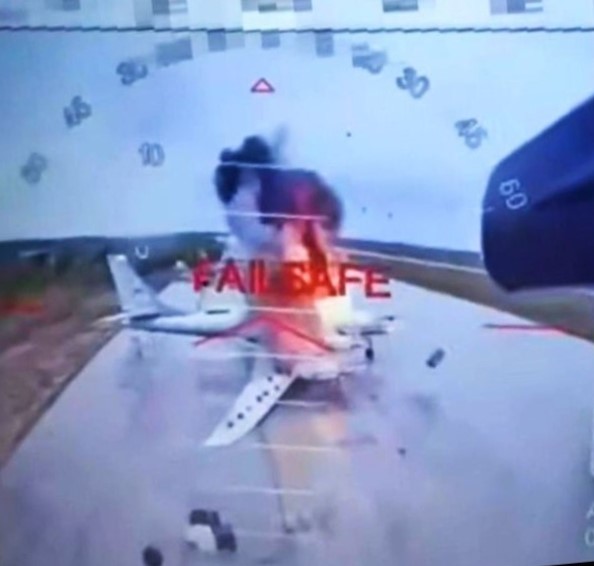
Ukraine’s Operation ‘Pavutyna’ strikes major blow to Russian strategic aviation
Peter Felstead
Ukraine carried out its most audacious strike yet against Russia on 1 June 2025 as drone-based attacks on four Russian airfields left around 40 strategic bombers critically damaged or destroyed.
Conducted by the Ukrainian Security Service (SBU), Operation ‘Pavutyna’ (Spider’s Web), as it was codenamed, used first-person-view (FPV) drones smuggled deep inside Russia and hidden inside trucks to attack four Russian air bases that host strategic bombers – including one 5,000 km away in southeastern Siberia.
While Dyagilevo Air Base in the Ryazan Region and Ivanovo Air Base in the Ivanovo Region were both hit, which are respectively around 470 km and 750 km northeast of Ukraine, Olenya Air Base in the Murmansk Region was also targeted, which is 1,800 km north of Ukraine, as was Belaya Air Base in the Irkutsk Region, which is around 5,000 km east of Ukraine and lies north of Mongolia.
The sheer range at which the attacks were launched meant that, while the Russian airfields might have had long-range air defence systems, they were entirely unprepared for attacks by short-range FPV drones, allowing the Ukrainian bomb-laden quadcopters to cause havoc.
An SBU source told the Kyiv Independent that “more than 40 aircraft are known to have been hit”, including Tu-95 turboprop-powered strategic bombers, Tu-22M3 and Tu-160 jet-powered supersonic strategic bombers and at least one of Russia’s A-50U airborne early warning and control aircraft, of which the Russian Air Force only has six, according to head of Ukrainian Defence Intelligence Lieutenant General Kyrylo Budanov, speaking in February 2024. These aircraft are high-value targets, since the bombers serve as carrying platforms for the Russian air-launched missiles fired at Ukrainian cities, while A-50s provide the command and control for those operations, as well as filling in certain areas of Russian radar coverage.
Of the three Russian bomber types, only the Tu-160 remains in production, meaning the aircraft destroyed by Operation ‘Pavutyna’ cannot easily be replaced. Even Russian Tu-160 production, however, is blighted by problems within Russia’s disfunctional aerospace industry.
The SBU claimed on its Telegram channel that Operation ‘Pavutyna’ had inflicted USD 7 billion (EUR 6 billion) worth of damage to Russia’s strategic aviation and hit 34% of Russia’s strategic cruise missile carriers.
Further detailing how Operation ‘Pavutyna’ was conceived and conducted, the head of the SBU, Lieutenant General Vasyl Maliuk, said that Ukrainian President Volodymyr Zelenskyy had set the task of destroying Russian bombers, while Gen Maliuk himself led the working group that prepared the special operation: a process that took over a year and a half. The operation was extremely complex logistically, said the general, as it was timed to take place simultaneously in three time zones at four separate locations to be able to target the maximum number of Russian bombers at once.


Zelenskyy’s reference to drone operators, along with the drone footage released by the SBU showing a ‘GPS: NO FIX’ message, potentially manual flight characteristics and revealing use of the ArduPilot open-source autopilot system, suggests that at least some of the Ukrainian drones were flown directly, controlled via 4G/LTE mobile communications networks.
Russian footage released on X/Twitter showing an explosion on a truck in Amur Oblast that was carrying a load similar to the drone-laden mobile homes used in Operation ‘Pavutyna’, at around the time of the attack, suggests that the Russian Long-Range Aviation base at Ukrainka was possibly a base that was targeted unsuccessfully by Operation ‘Pavutyna’.
















